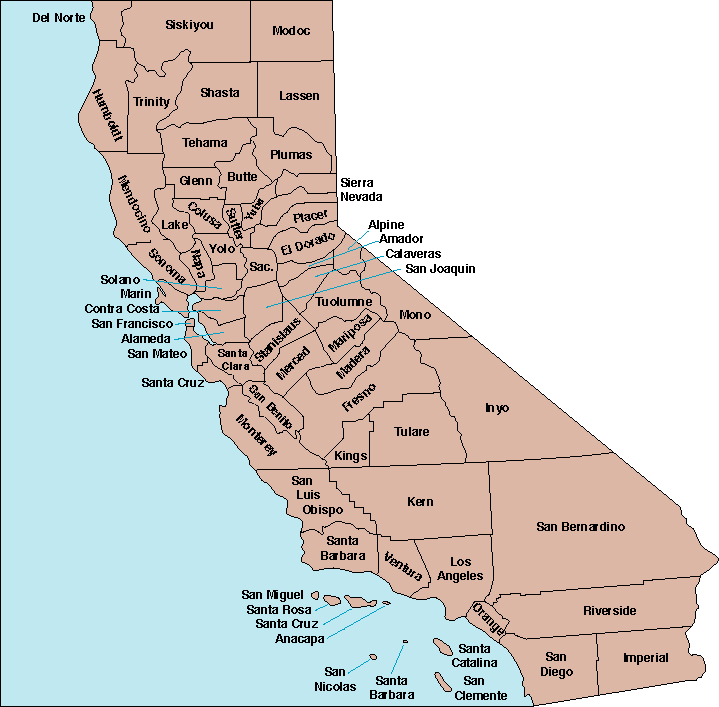California Counties Overview: How Many, Where, and Why They Matter
California Counties Overview: How Many, Where, and Why They Matter
Blog Article

Curious to know what the exact county count in California is? You’re not alone. Be it for research, a road-trip map, or pub-quiz glory, the number 58 keeps popping up, butthat short answeris just the first layer of a deeper tale.
The Golden State’s 58 counties createa patchwork of contrasts: fog-kissed seaside towns, snow-capped alpine districts, fertile Central Valley breadbaskets, and global entertainment capitals. Every county has a chapter in the state’s saga, moulded byimmigration waves, high-tech revolutions, and relentless population booms.
In the sections ahead, we’ll dig intothe timeline that locked the total at 58, what each county actually does for its residents, and the outliers that set fascinating records. By the end, you’ll have the numbers—and map your next California adventure with confidence.
County-Making in Early California
On statehood day in 1850, the map was a patchwork of just 27 jurisdictions. Rapid gold-rush immigration forced lawmakers to redraw borders. Within twenty years, the count had risen to 53 counties, and that same year the final five were added, locking in the canonical figure of 58.
Assembly journals reveal that many break-away regions were born because of three major pressures:
- Hundreds of rugged miles turned routine business into week-long trips.
- Tax disputes between miners and farmers sparked break-ups.
- Cultural rivalries demanded tailored governance.
By 1920, the political map hardened. Right now, no proposal to add a 59th county has cleared committee, causing commentators to dub the era of county making decisively over.
Landscape and Climate Diversity Across California Counties
Imagine a line from the Smith River watershed to sun-baked Imperial touching Mexico, and you’ll cross every Köppen zone short of tundra. Coastal counties soak up fog-cooled summers, while interior giants like San Bernardino or Kern battle drought cycles.
- Alpine districts such as Mono, Mariposa, and Calaveras host ski resorts.
- Delta counties fight subsidence but export produce worldwide.
- Channel-coast administrators like Santa Barbara license film crews on beaches.
That geographic spread underpins the stark fiscal gaps between counties. Weather sets tax bases and lifestyles.
County Government and Core Services
Within the state’s tiered system, municipalities handle zoning, but county boards oversee vital “unseen” duties that make communities livable. Life’s paperwork trail—vital records, coroner reports, property deeds—all sit at the recorder-assessor’s office.
County law-enforcement offices patrol unincorporated land, while trial courts hear civil suits. Health departments coordinate Medi-Cal. Funding debates fill chamber galleries with activists.
Example: Contra Costa’s Shared Services Model
Tiny Alpine operates from a single two-story courthouse, showing how elastic county structures can be. There’s no single blueprint when land areas shift from 47 to 20 000 sq mi.
At day’s close, these 58 mini-capitols act as middle managers between Capitol and curbside. Understanding their remit guides newcomers navigating paperwork.
Where the People and Money Are
Home to over 39 M souls, but the headcount is far from evenly spread. LA County by itself hosts more than one resident in four. Conversely, high-elevation Alpine rarely tops 1 200 inhabitants.
- Most populous: LA County
- Fewest people: Alpine County
- Biggest footprint: San Bernardino
- Tightest borders: San Francisco
Fiscal bandwidth mirrors population spread. South Bay enclaves boast per-capita GDP rivaling small nations, while interior ag counties depend on seasonal labour influxes. This revenue gap drive school funding debates every decade.
Tracking each superlativeis trivia gold: county borders redraw home-buying budgets and business licences.
Touching All Counties in One Journey
Adventure-hungry drivers, setting foot in each CA county has become a badge. The classic route sets out in San Diego, heads north along Highway 1, curves inland at Monterey, then cuts a diagonal across rice-field flats and orchard grids, before ascending into the high Sierra for old stamp mills.
Three-Day County Clusters
- South-land Loop – Border to wine country; ten jurisdictions in three days.
- Crop-Belt Drive – Bakersfield up to the delta; produce-market run.
- Shasta & Siskiyou Turn – crater-rim roads; hidden hot springs.
Close the circuit in Imperial, after two thousand kilometres of asphalt. After that, you can confidently claim you know “how many counties California has”—having grabbed selfies at every line marker.
Frequently Asked Questions
Below you’ll find concise answers to the most common county-related queries.
How many counties are in California?
California officially recognises 58 counties—a total locked in for over a century. Check any authoritative source, and you’ll find the same figure: 58.
Most populous California county?
Los Angeles County tops the list, home to over 10 million residents. From Hollywood to high tech, a mix how many counties are in the state of california of industries continues to fuel steady inflow.
What is the smallest county in California by population?
The crown for smallest population goes to Alpine County, with fewer than 1 200 inhabitants. Location along rugged mountain corridors limits large-scale development, preserving a frontier feel.
Largest county by land size?
Geographic titan San Bernardino County covering a footprint larger than nine U.S. states. You can drive for hours without leaving its borders—crossing ski slopes, dunes, and bedroom communities.
Why does California have exactly 58 counties?
Gold-rush politics, rail expansion, and farmland disputes carved today’s boundaries, wrapping up after Imperial broke from San Diego in the early 20th century. Every modern effort to create a new county stalls in committee or dies at the ballot box.
Is it possible to form a 59th county?
Legally, yes—state law allows it, yet practical barriers loom large. Petition drives, feasibility studies, dual-county referenda, and a two-thirds vote in Sacramento make secession rare. Hence, California has remained at 58 for generations.
Which responsibilities fall to county governments?
Behind the scenes, counties keep daily life functioning: voter registration, deed recording, health clinics, and sheriff patrols. Remove counties from the equation, and civil society would struggle to operate.
Report this page